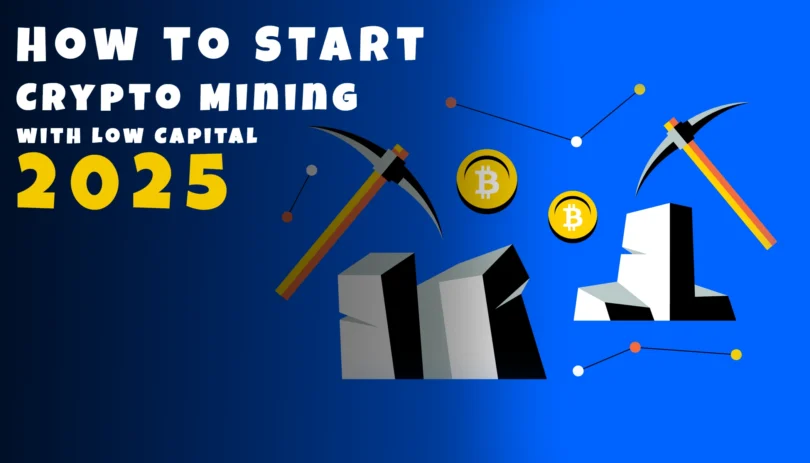Table of Contents:
- What is Crypto Mining?
- Essential Tools to Begin
- Mining with Phone vs. PC
- What is Cloud Mining?
- Choosing the Best Coin for Mining
- Mining Risks to Consider
- Final Thoughts
Cryptocurrency mining has evolved significantly over the past decade. While it once required high-powered machines and technical expertise, it has become more accessible—even for individuals with limited capital. In this 2025 guide, we will walk you through everything you need to know to start crypto mining on a budget.
1. What is Crypto Mining?
Crypto mining is the process of verifying and adding transactions to a blockchain network. Miners solve complex cryptographic puzzles, and in return, they earn newly minted coins and transaction fees. This process is essential for decentralized networks like Bitcoin, Ethereum (now transitioning to proof-of-stake), and various altcoins.
2. Essential Tools to Begin
To start mining, you’ll need the following tools:
- Hardware: Smartphone, laptop, desktop PC, or specialized equipment.
- Wallet: A digital wallet to store your mined coins (e.g., Trust Wallet, MetaMask, or Exodus).
- Mining Software: Depending on your hardware, tools like NiceHash, CGMiner, or MinerGate.
- Internet Connection: Reliable and consistent connectivity is crucial for active participation.
3. Mining with Phone vs. PC
If you’re on a very low budget, mining from your smartphone may be your entry point. Apps like Pi Network, Eagle Network, or Bee Network allow cloud-based mining simulations. While rewards are low, they help you understand how mining works.
PC mining offers better returns. A gaming PC with a decent GPU (e.g., Nvidia GTX 1660 or better) can mine coins like Ethereum Classic (ETC), Ravencoin (RVN), or Ergo. However, you must balance energy costs and hardware wear and tear.
4. What is Cloud Mining?
Cloud mining allows you to rent hash power from data centers. You don’t need to maintain hardware or software. Popular cloud mining services include:
- Genesis Mining
- Hashflare
- IQMining
Before choosing a platform, ensure it’s legit. Research reviews, verify uptime, and look at their payout structure. Be wary of scams, as cloud mining has been a hotbed for fraud.
5. Choosing the Best Coin for Mining
Not all coins are created equal when it comes to profitability. In 2025, the best coins for beginner miners include:
- Ravencoin (RVN): GPU-friendly and decentralized.
- Dogecoin (DOGE): Often mined alongside Litecoin using merged mining.
- Ethereum Classic (ETC): Good for mid-range GPUs.
- Monero (XMR): CPU-mineable, offers privacy features.
Use websites like WhatToMine.com to compare profitability based on your hardware.
6. Mining Risks to Consider
- Volatile Returns: Crypto prices fluctuate. Mining profit today may not be profit tomorrow.
- Hardware Damage: Continuous mining stresses your components.
- Electricity Costs: Your electric bill could outweigh your earnings.
- Scams: Especially in cloud mining and mining app markets.
Always start small, track your costs, and never invest more than you can afford to lose.
7. Final Thoughts
Crypto mining in 2025 remains a viable entry point into the crypto world, even with low capital. It’s not a get-rich-quick scheme, but with patience and the right approach, it can become a profitable side hustle. Educate yourself, start small, and scale as you learn. The world of digital currency is expanding—now’s a great time to get involved.


